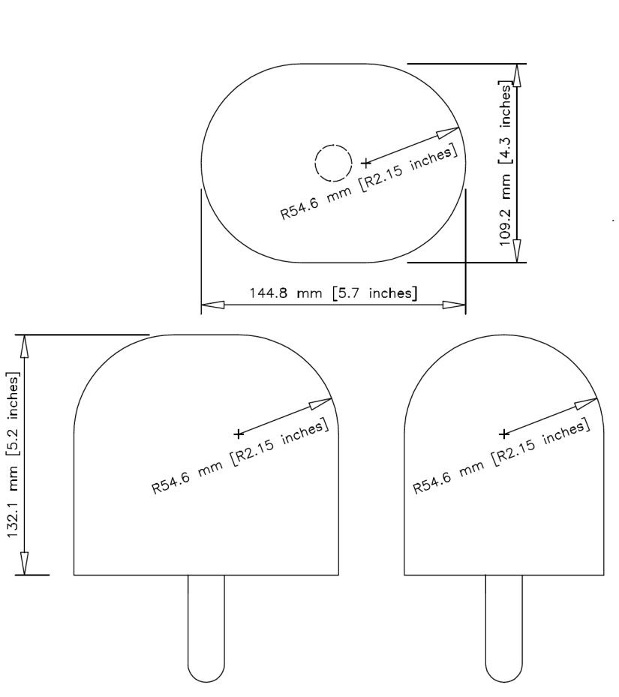Playpens Regulations (SOR/2018-186)
Full Document:
- HTMLFull Document: Playpens Regulations (Accessibility Buttons available) |
- XMLFull Document: Playpens Regulations [139 KB] |
- PDFFull Document: Playpens Regulations [1489 KB]
Regulations are current to 2024-11-26 and last amended on 2022-12-19. Previous Versions
SCHEDULE 15(Subsections 30(1) and (2))Tests for Entrapment in Accessories
1 The following method is to be used for testing openings that are created when an accessory is placed on or fixed to a playpen:
(a) assemble the playpen and the accessory or accessories according to the manufacturer’s instructions, omitting any attachments that could interfere with the conduct of the test;
(b) place the accessory or combination of accessories on the playpen — or fix it or them to the playpen — in one of the manufacturer’s recommended use positions, and identify any openings that are created and are likely to permit the passage of the small head probe illustrated in Figure 1 to this section but not the large head probe illustrated in Figure 2 to this section;
(c) rotate the small head probe to the orientation that is most likely to permit its passage through one of the identified openings and, from inside the occupant retention area of the playpen, gradually apply an upward or outward force of 111 N to the probe over a period of five seconds, then maintain the force for 10 seconds;
(d) if the small head probe can pass entirely through the opening, repeat the step set out in paragraph (c) using the large head probe and attempt to pass it, without forcing it, through the opening in any orientation;
(e) repeat the steps set out in paragraphs (c) and (d) for all the other identified openings; and
(f) repeat the steps set out in paragraphs (b) to (e) for all the other manufacturer’s recommended use positions.
Figure 1 — Small head probe

Figure 2 — Large head probe

2 The following method is to be used for testing openings that are created by the detachment or displacement of an accessory from a playpen:
(a) assemble the playpen and the accessory or accessories according to the manufacturer’s instructions, omitting any attachments that could interfere with the conduct of the test;
(b) place the accessory or combination of accessories on the playpen — or fix it or them to the playpen — in one of the manufacturer’s recommended use positions, and identify the parts of the accessory that are most likely to detach or become displaced and so create an opening;
(c) using a rod that has a circular tip with a diameter of 50 mm, gradually apply an upward or outward force of 111 N over a period of five seconds to one of the identified locations;
(d) if an opening is created, attempt to pass the small head probe illustrated in Figure 1 to section 1, without forcing it, through the opening in any orientation;
(e) repeat the steps set out in paragraphs (c) and (d) for all the other identified parts of the accessory; and
(f) repeat the steps set out in paragraphs (b) to (e) for all the other manufacturer’s recommended use positions.
- Date modified: